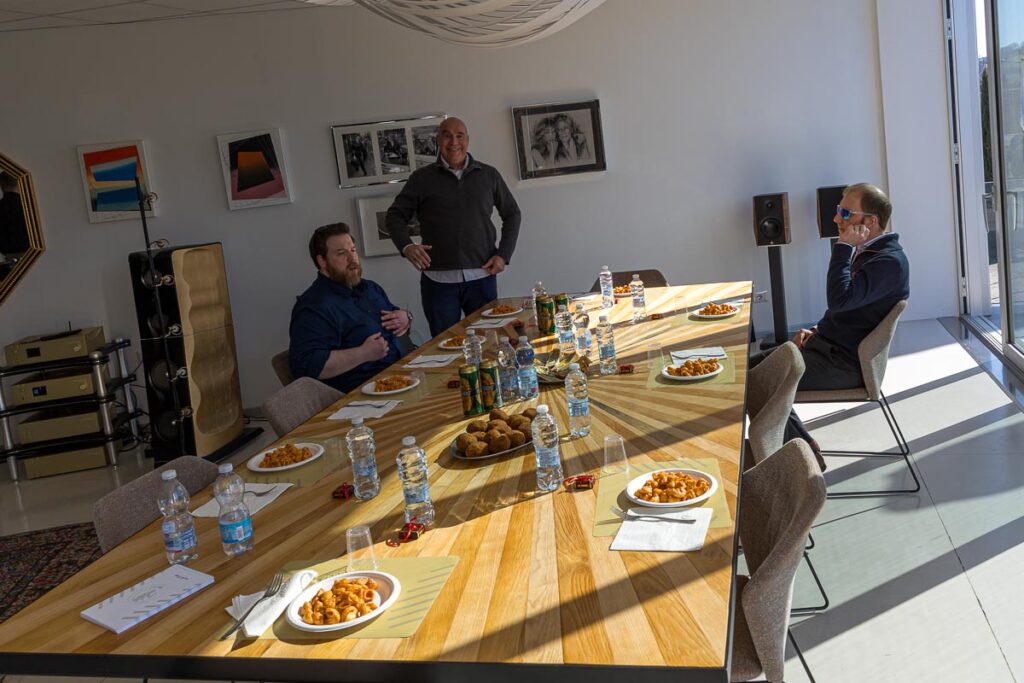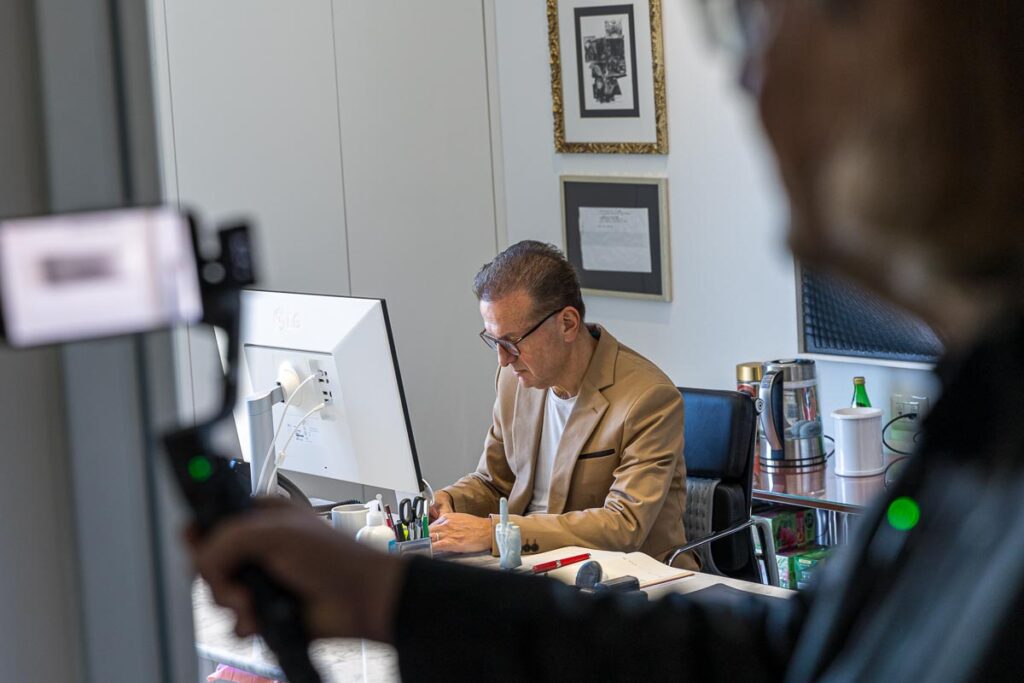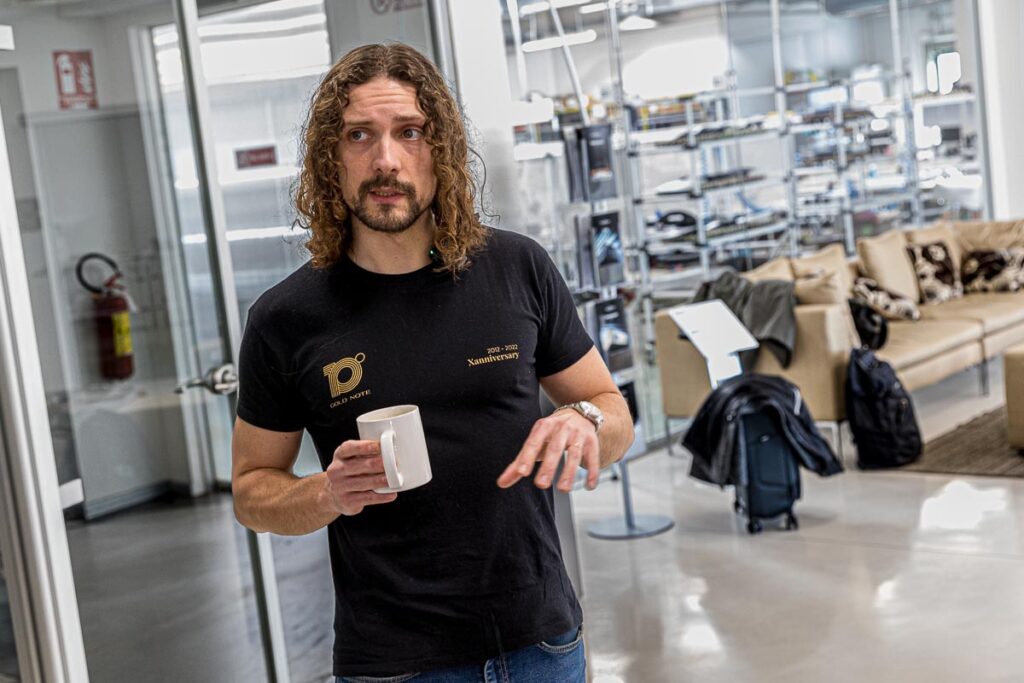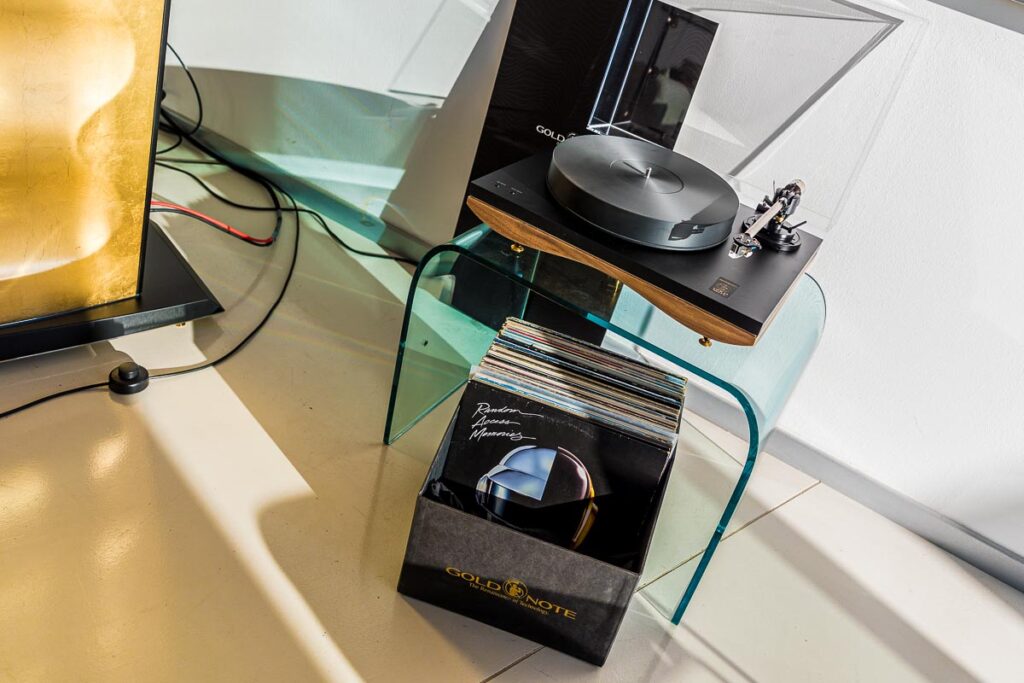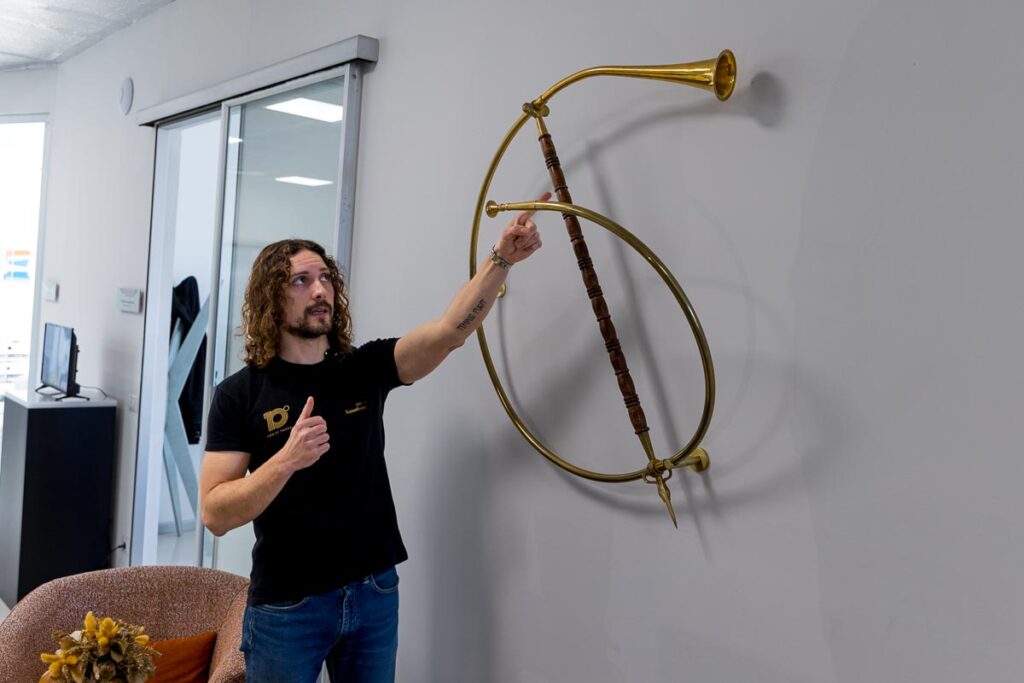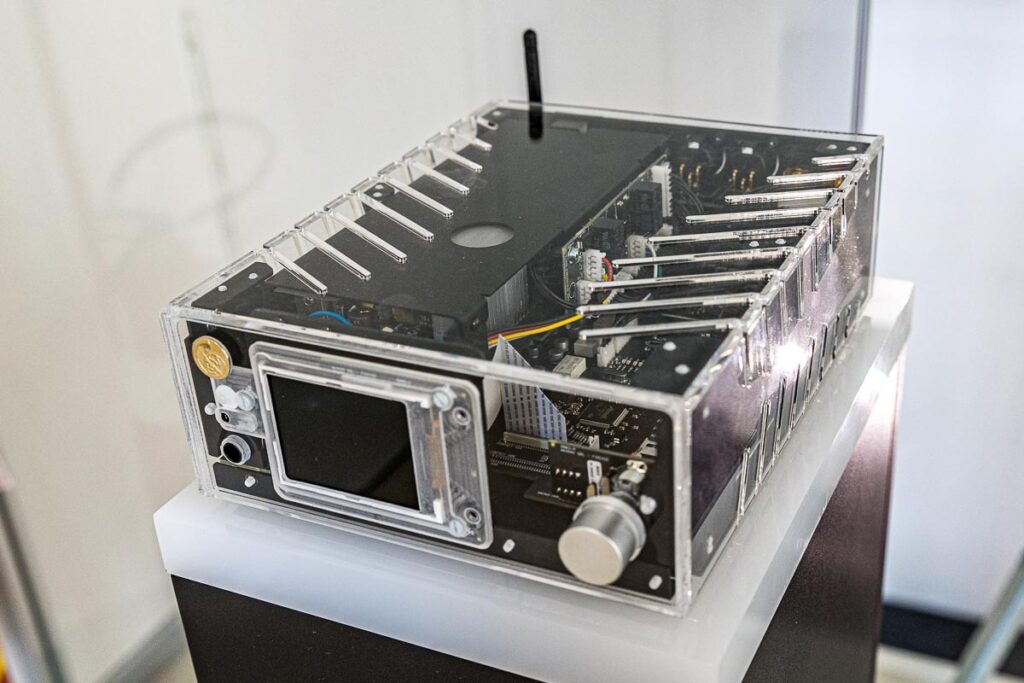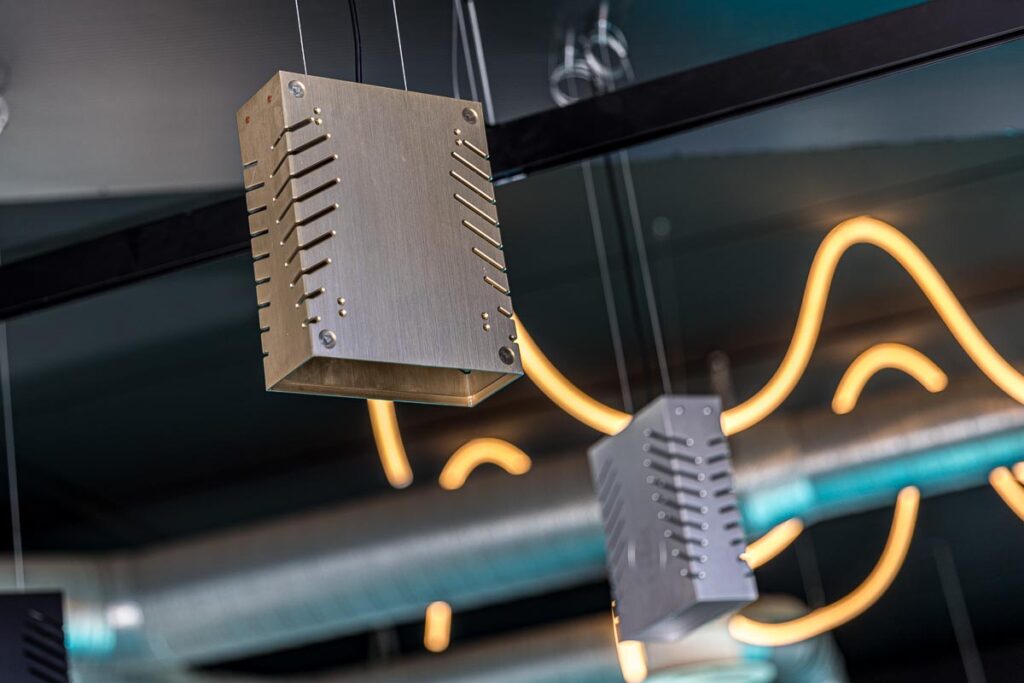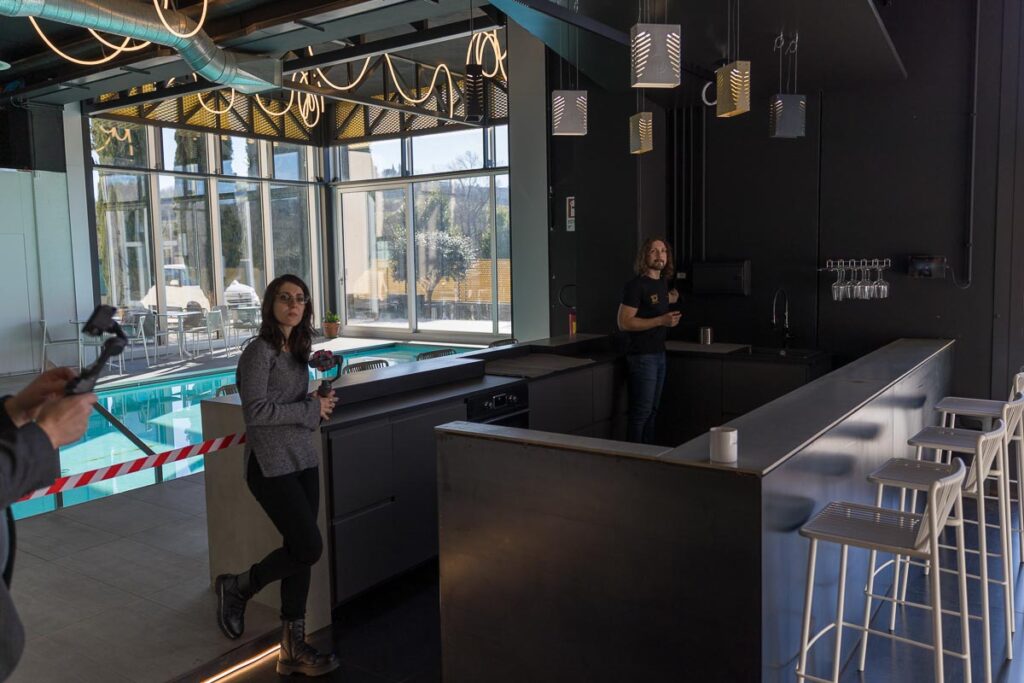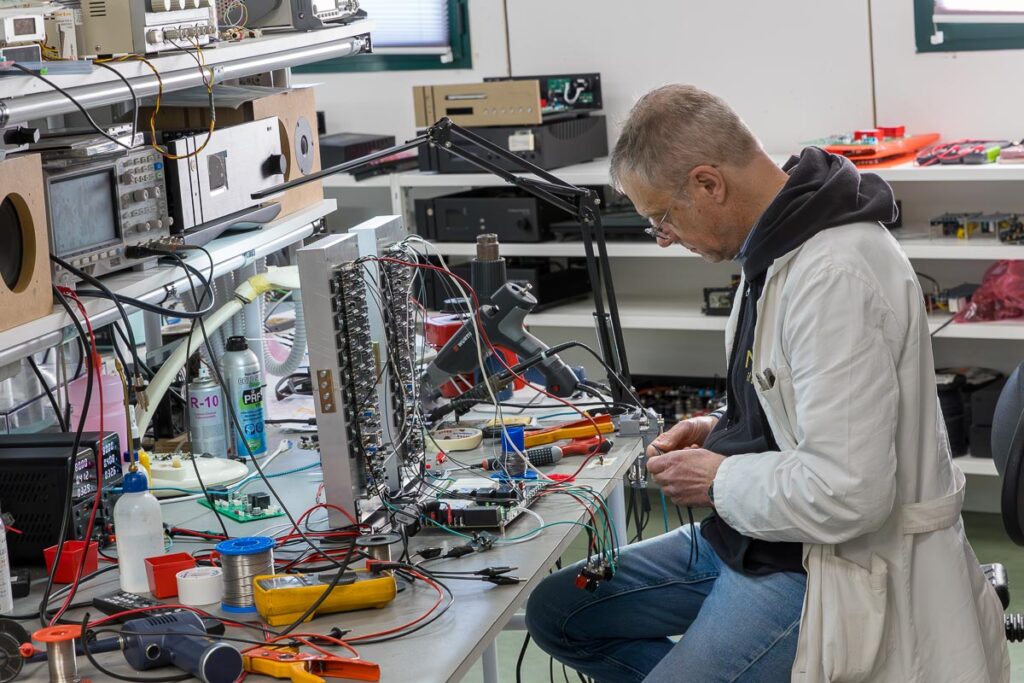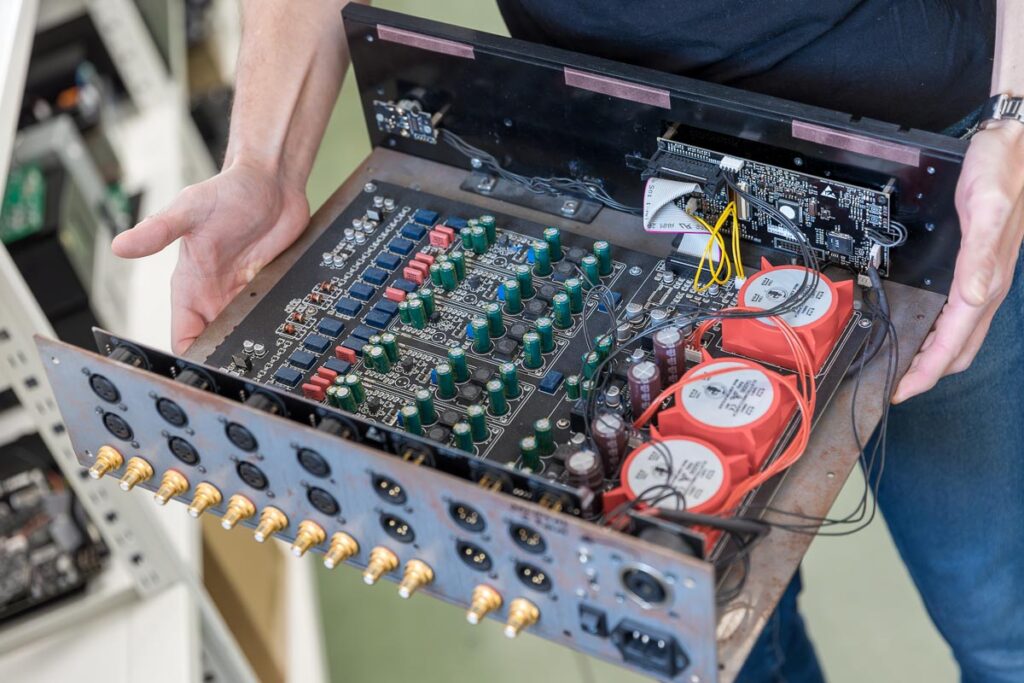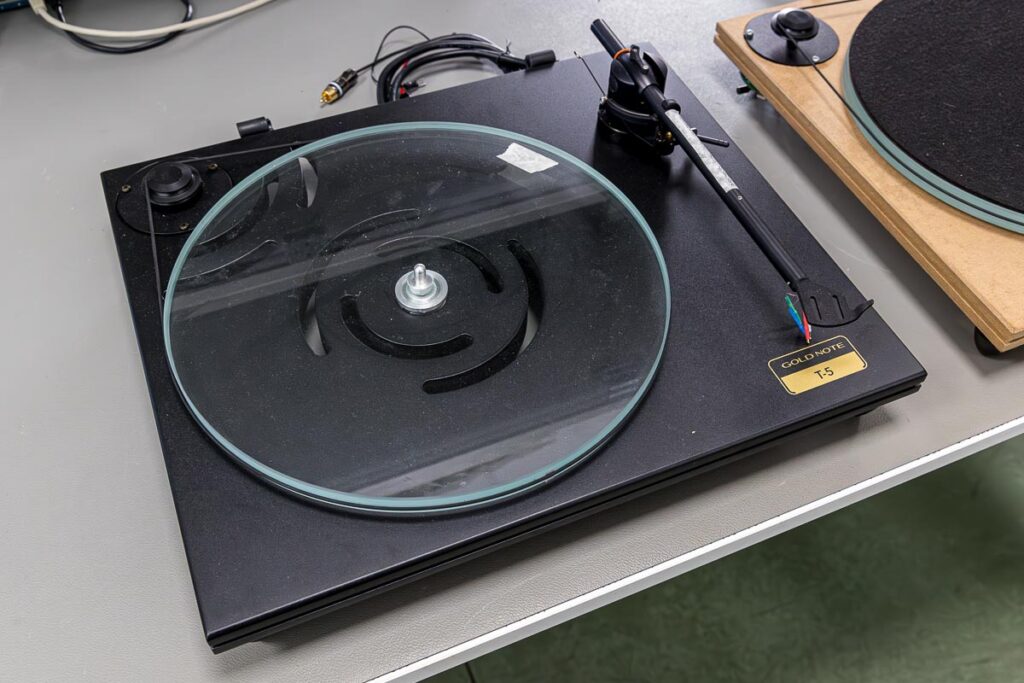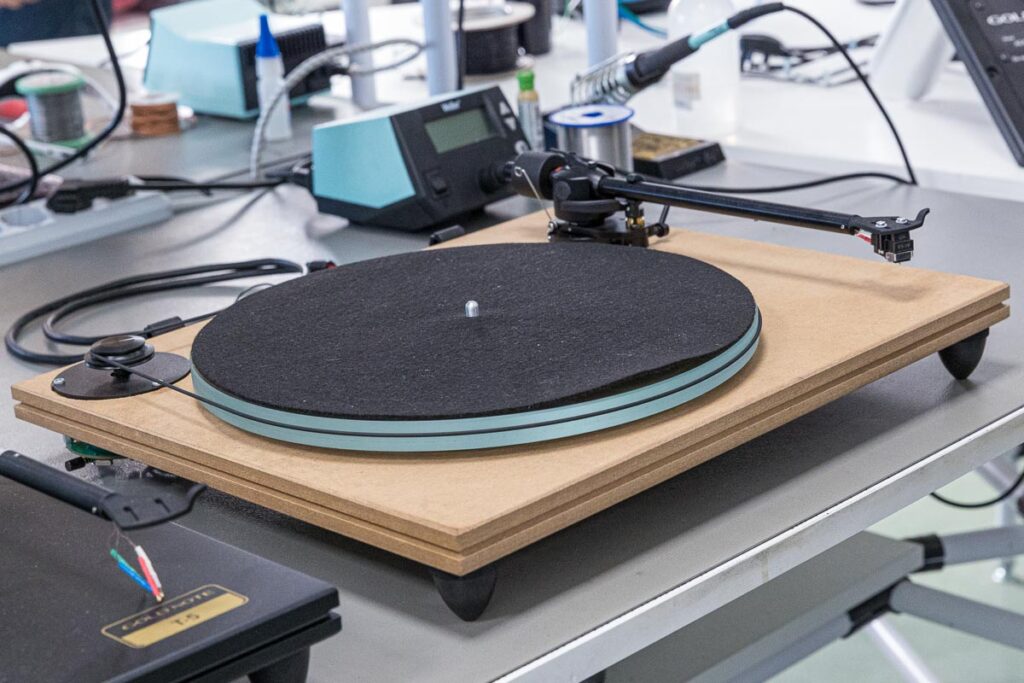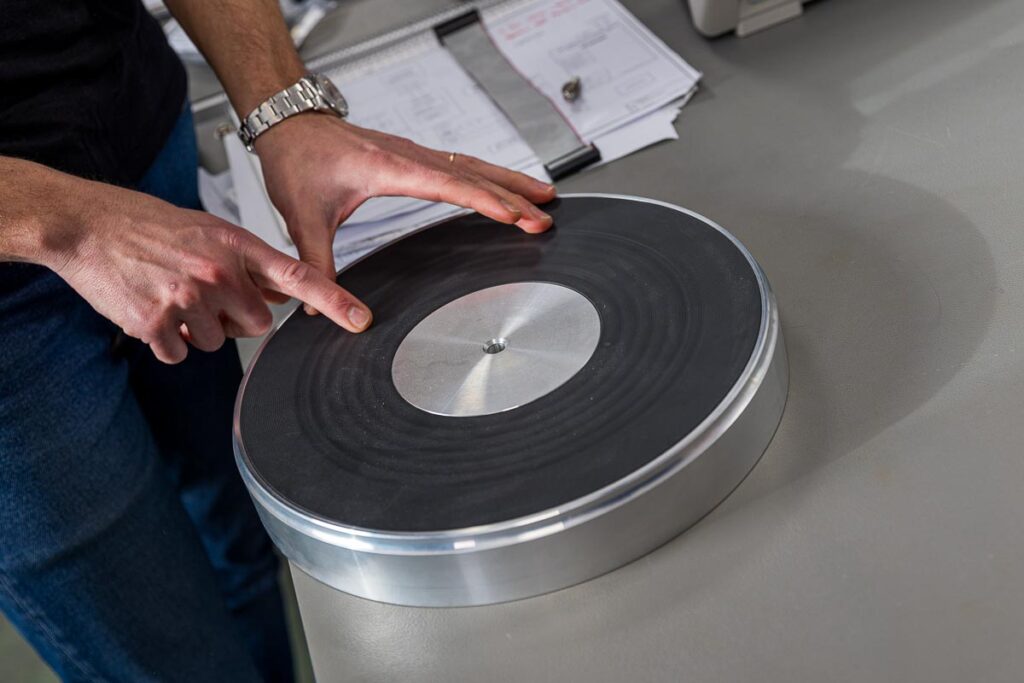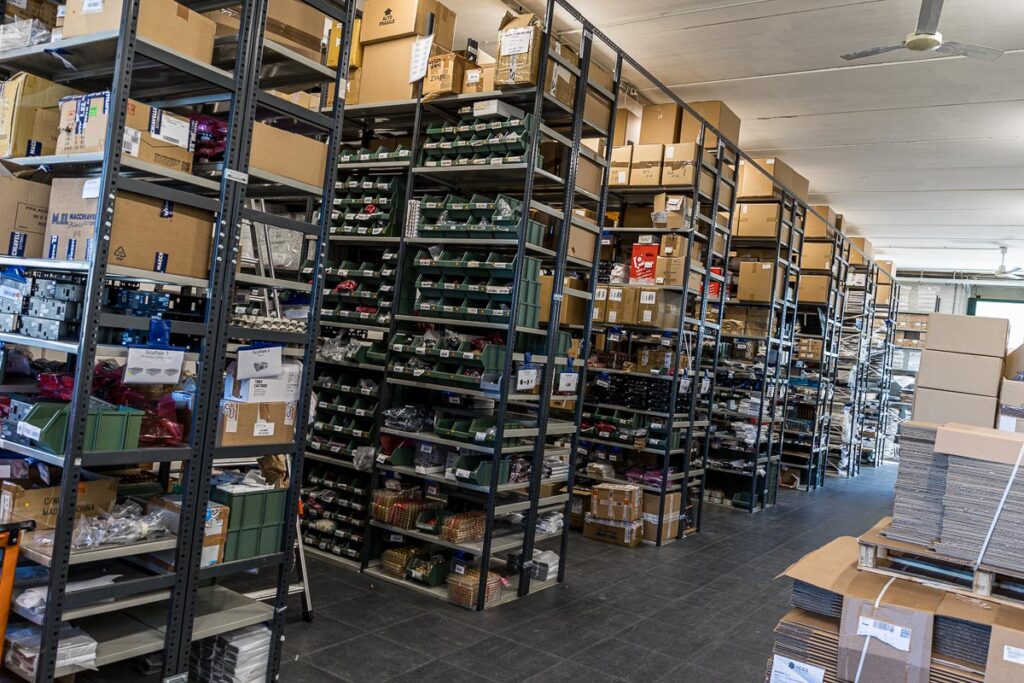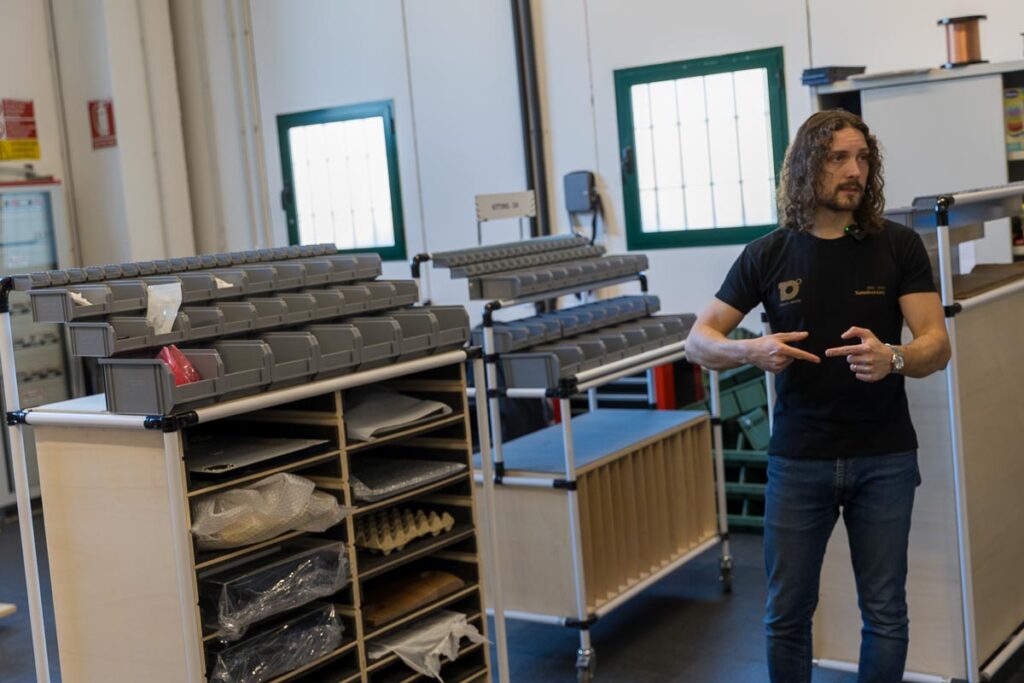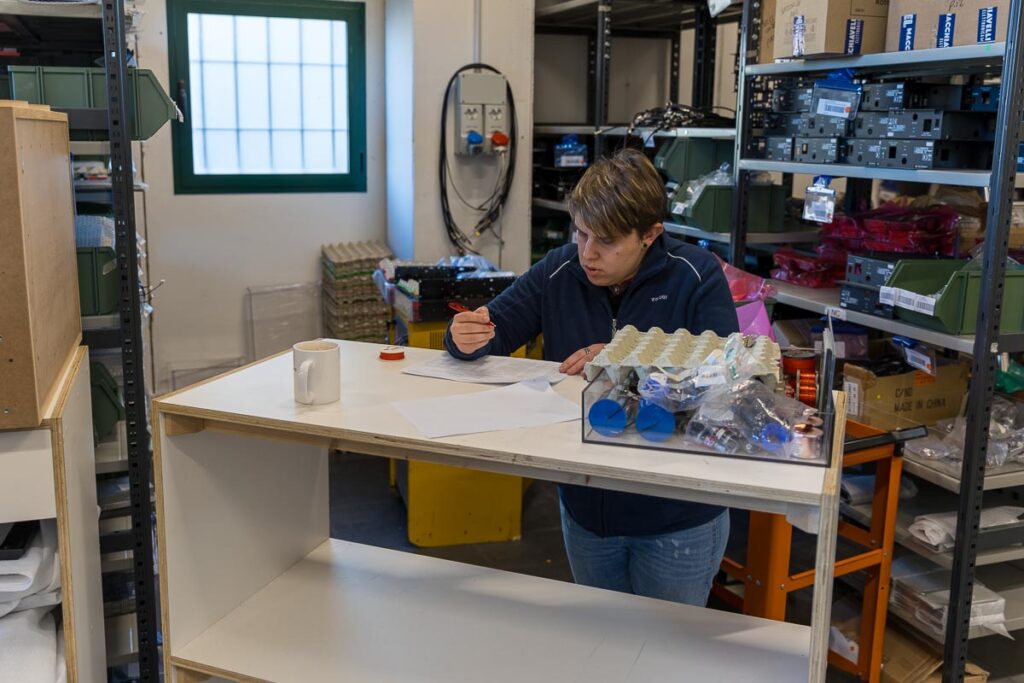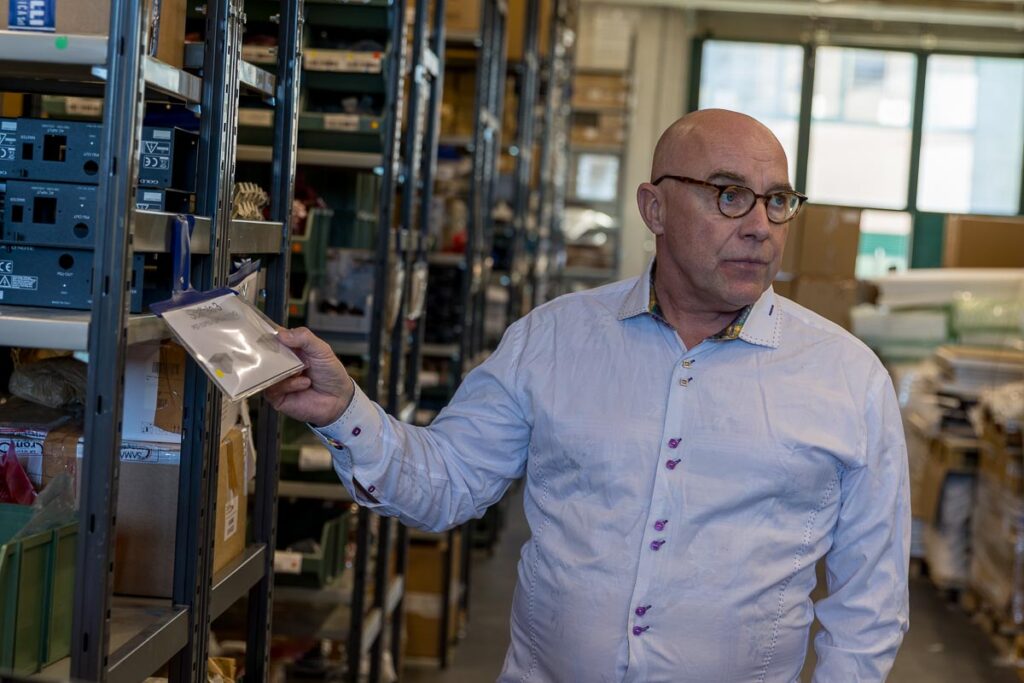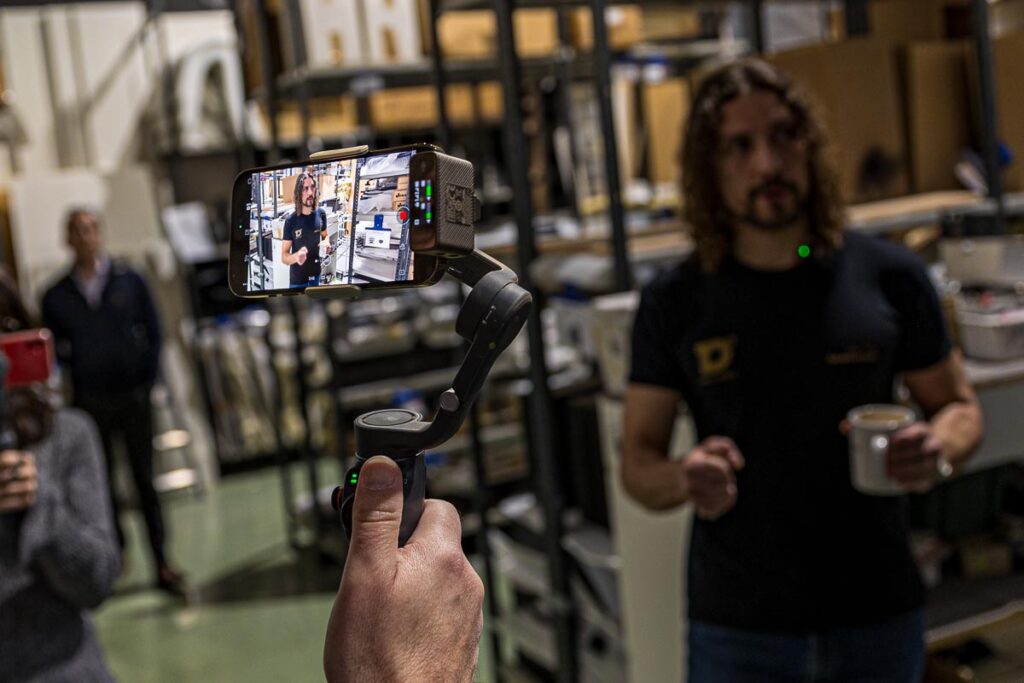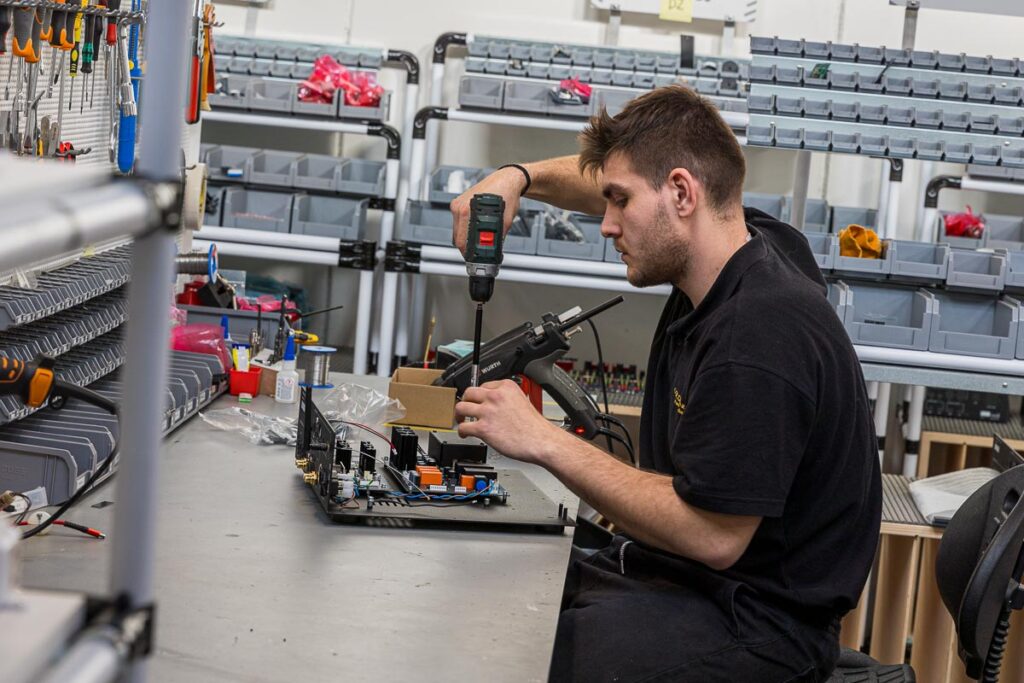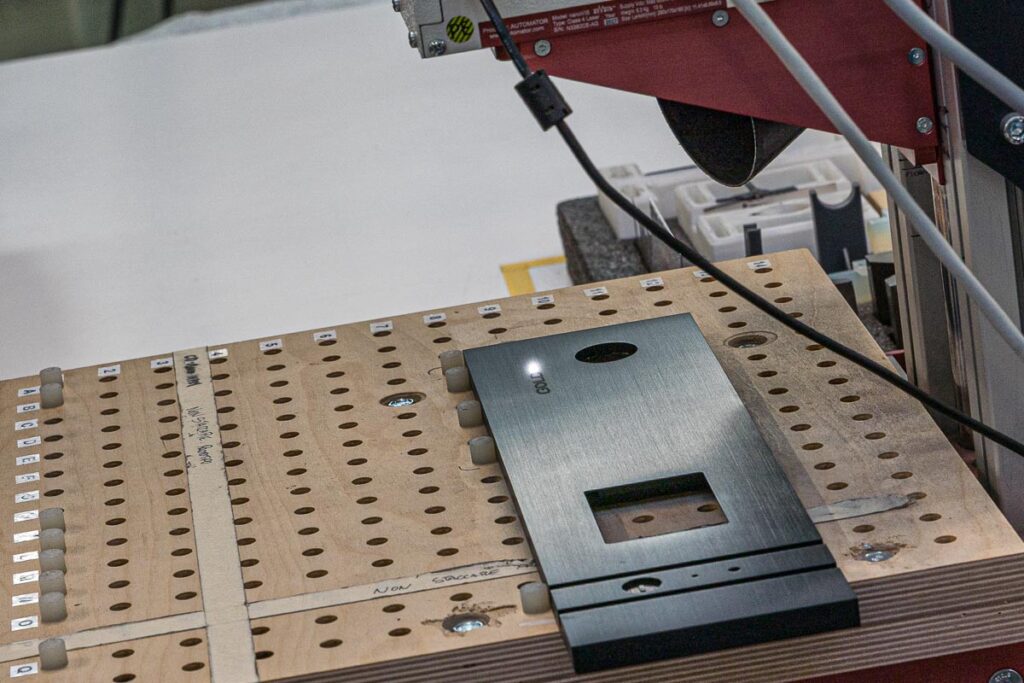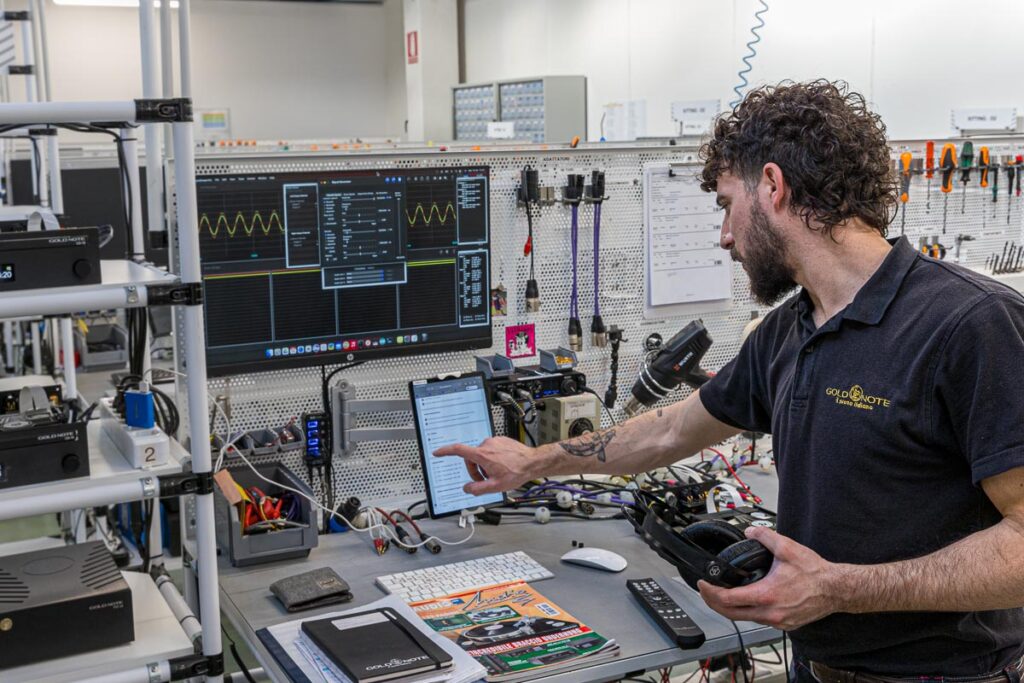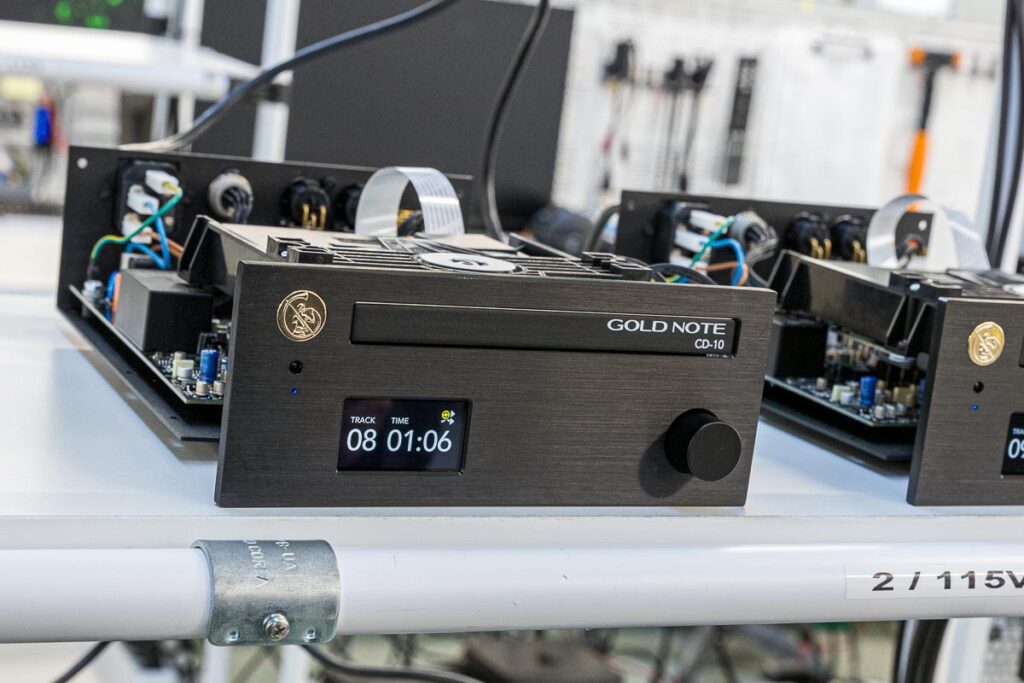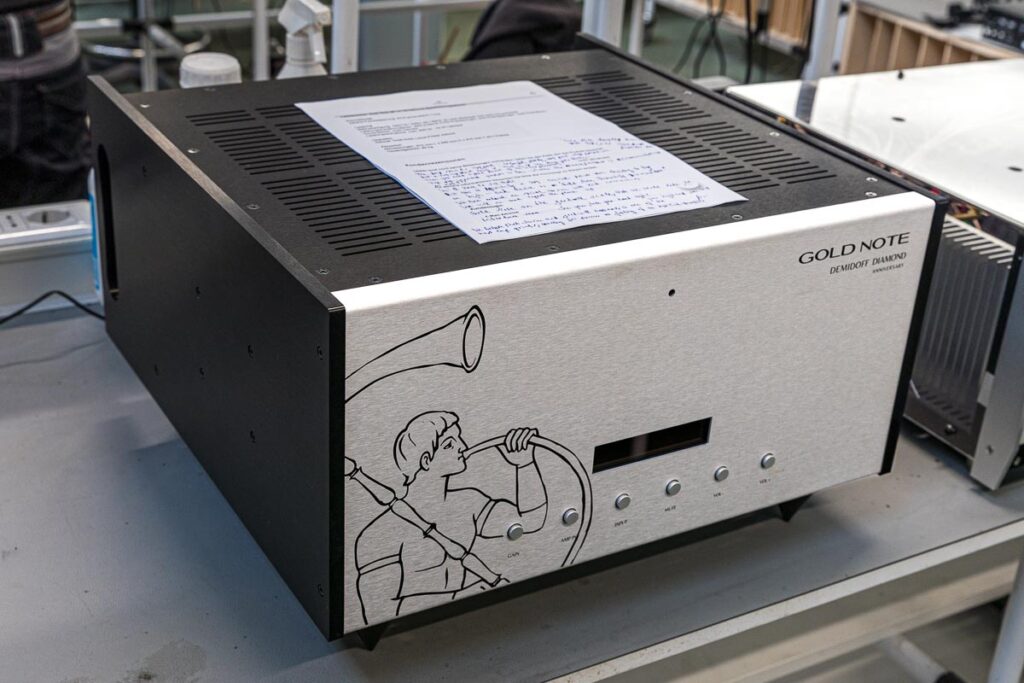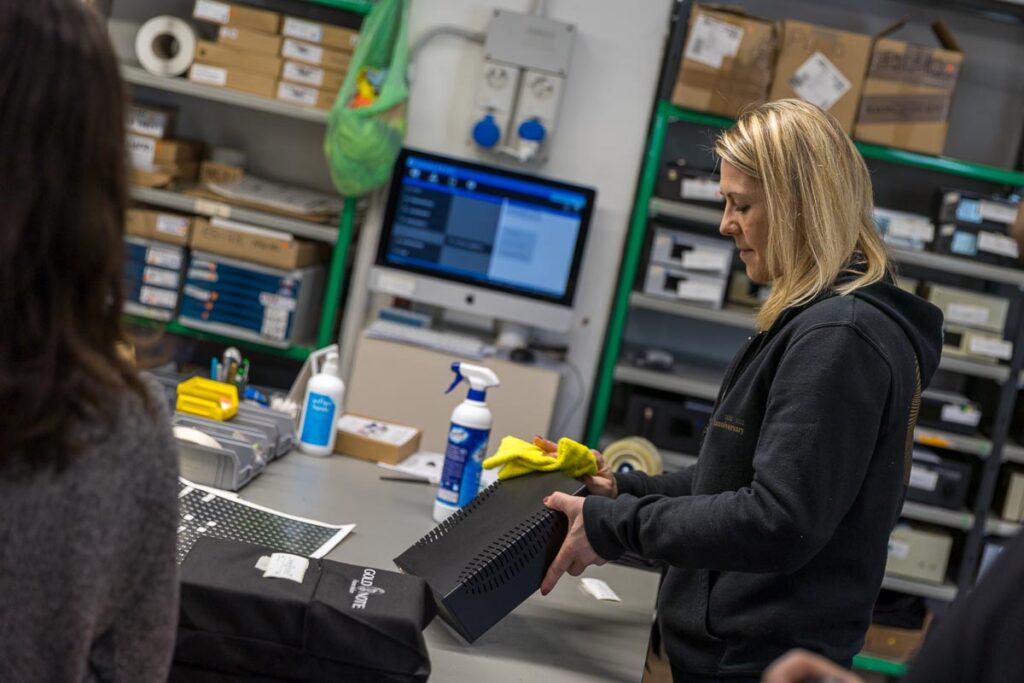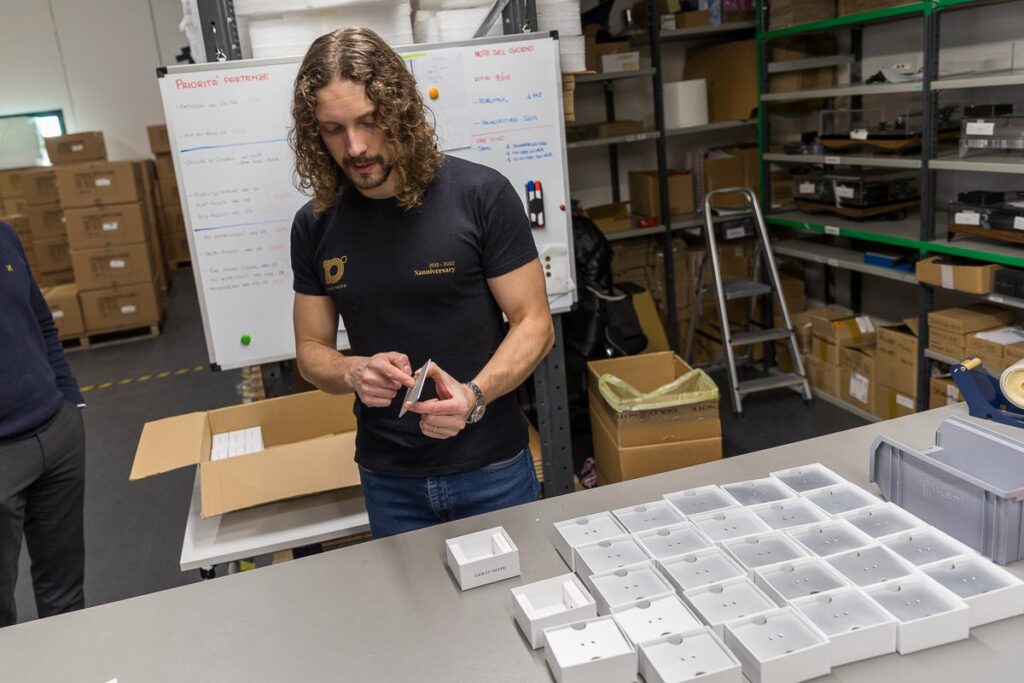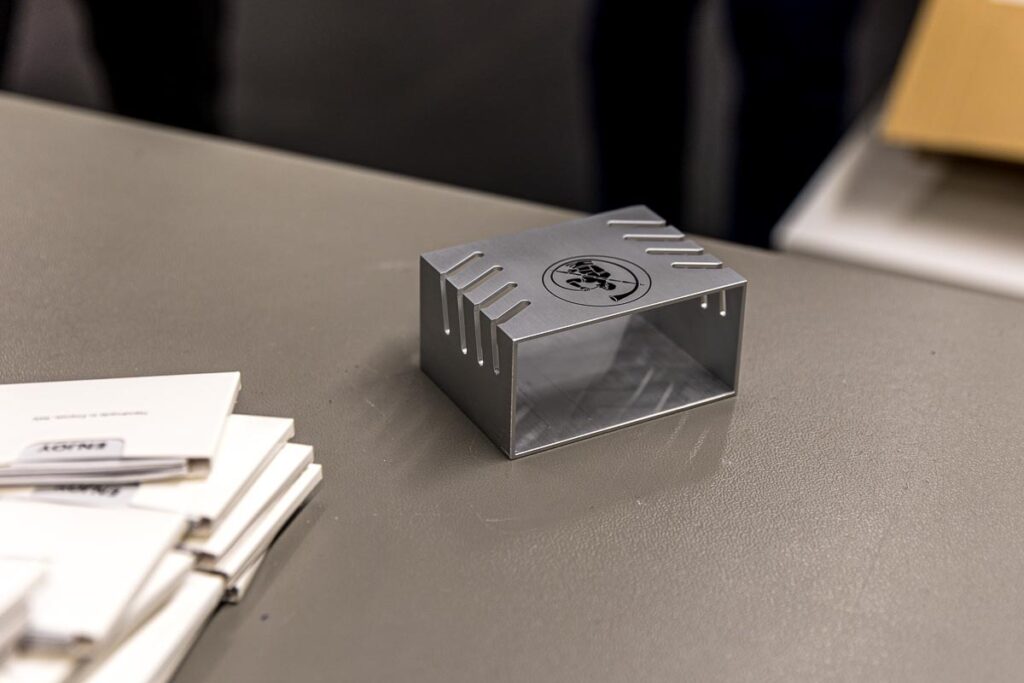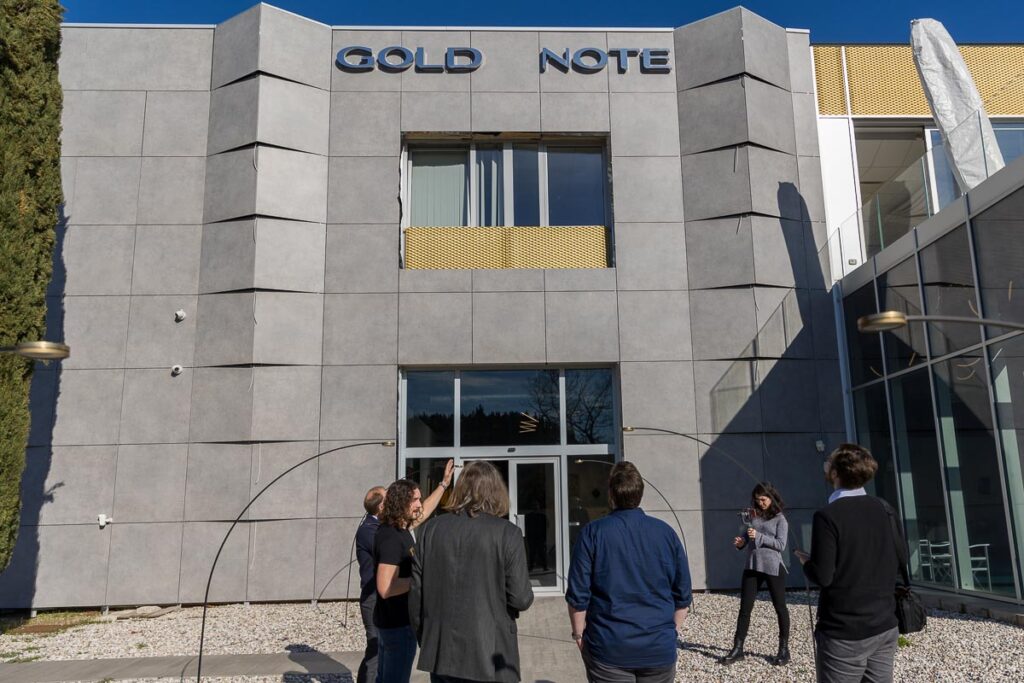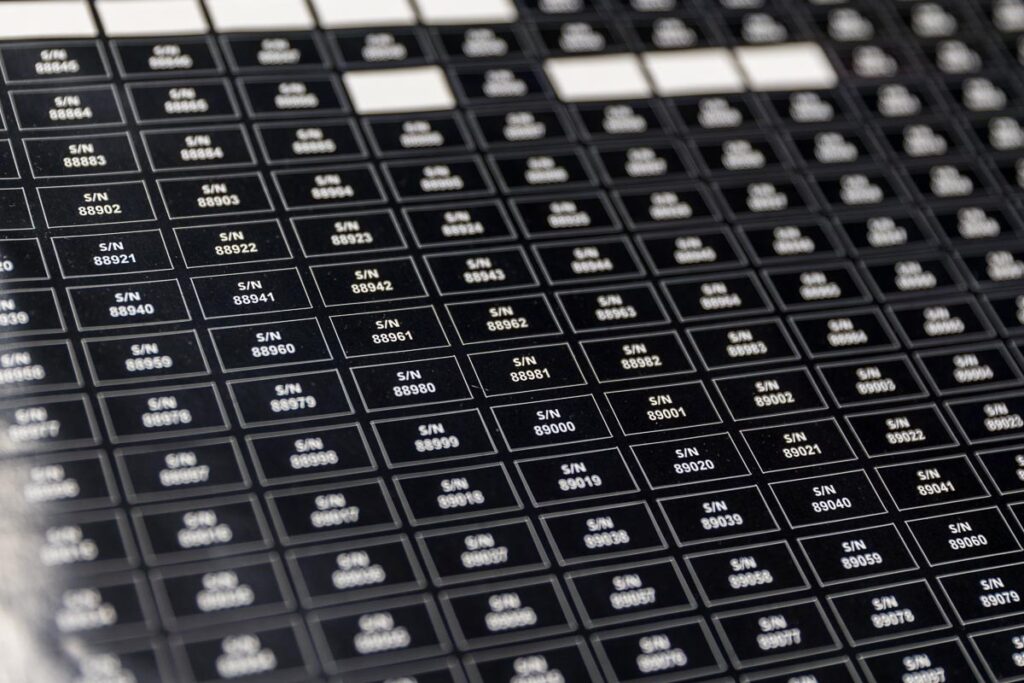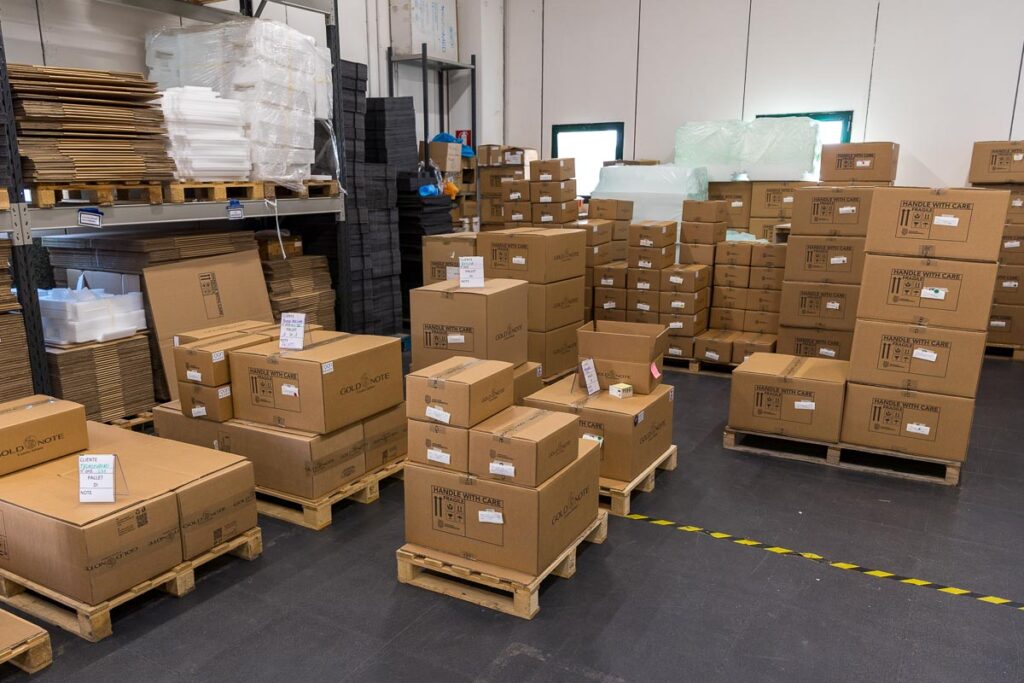AXPONA (Audio Expo North America) has become the biggest audio show in the United States. The 2024 show featured more than 200 exhibit rooms with over 600 exhibitors and brands. More than 10,000 attendees from around 50 countries showed up – a 14 percent increase, according to AXPONA.
As Ed Sullivan used to say, a really big show. Usually, I stress out about trying to cover every exhibit at AXPONA, but this time I didn’t, knowing that it would simply be impossible. Every one of my peers in the press who I talked to felt the same. That said, I did get to cover a lot of ground – according to my phone, I took about 40,000 steps (around 20 miles) from the time I got on the plane to when I got home.
So, for any exhibitor who isn’t mentioned here, it’s not because I didn’t want to! Readers, there’s a lot of online coverage about AXPONA as the audio press was out in full force, so Google is your friend as far as triangulating a big picture.
The general mood among industry people and attendees was upbeat. Whether someone came to exhibit, audition possible purchases, buy records (and there were lots of them), see what there was to see, attend one of the many very informative seminars, or just gape, people were having a good time and there was a lot of energy and enthusiasm in the air.
Setting up an exhibit can take a lot of time and effort, as these road cases can attest.
My usual caveats about the sound you hear at shows were, if anything, reinforced. Especially this one:
You cannot make definitive judgments about sound at shows!
Some rooms might be acoustically downright poor, and even the big ballrooms may not be a good match for the size of the speakers in them, or have weird room modes. (A speaker manufacturer once told me it’s impossible for most speakers to work well in huge rooms.) The quality of the AC power can be lousy. There might be co-exhibitors who have never used their equipment together before and have no idea whether they’ll have synergy, or the opposite. Yes, it happens; at least one manufacturer didn’t know what model loudspeaker the other co-exhibitor was going to bring until setup day. A distributor, whose sound was markedly better this year than at AXPONA 2023, told me that because of logistical headaches they simply didn’t have enough time to set their system up optimally at last year’s show.
The sound of a room can change from day to day or even hour to hour. If a room is crowded, it will sound different than if empty (and good luck getting the sweet spot in a crowded room). In addition, some systems settle in over time. (If you’re one of those who think warm up or break-in is a myth, with all due respect, my experience is otherwise.) I visited one room – Wolf Audio Systems/House of Stereo – that sounded really, really good when I first heard it. When I went back on Sunday afternoon, it was exceptional.
Jorge Sadurni in the Wolf Audio Systems/House of Stereo room. (Read more about this room below.)
There are so many other variables – temperature, humidity, and not least, your mood and physical condition (I don’t know about you, but if my sinuses are stuffy, forget it) – that it’s simply not fair to make Pronouncements from On High at an audio show. On the other hand, if a room sounds terrific, it’s a beautiful thing, and there are always some standout rooms. One of my colleagues opined that audio shows are good for making short lists.
Well, that, and certainly, for hanging out. It’s always loads of fun for me to meet and talk to old friends, and if you’re an attendee, it’s a chance to meet the designers, engineers, company representatives, press, show organizers and other people who work their butts off to make these shows happen.
I have to once again (as I have in previous articles) comment on the prices of some of the gear, prices which have reached eye-watering levels. One room had almost $200,000 worth of cables alone. Six-figure speaker systems aren’t quite commonplace, but they’re prevalent enough to have become a thing. So, this level of audio equipment has become completely out of reach for the vast majority of audiophiles. But not all. Is this gear overpriced? (I think some of it is, but without actually knowing the manufacturing costs, I can’t be definitive.) We can shake our heads, call it snake oil, laugh, or be jealous that we can’t afford it, but the fact is, while it’s still the exception and not the norm, it is reality now.
Yet on the other side of the, erm, coin, there were lots of of genuinely affordable components at the show, from the Schitt Audio gear, to a $249 xDuoo vacuum tube headphone amp, to what I’d call absolute bargains like Elac and Wharfedale speakers.
To paraphrase Mark Twain, in my opinion, based on the evidence at AXPONA 2024 (and CanJam NYC), the reports of the death of high-end audio are greatly exaggerated. I saw a greater percentage of younger people, women, families, diversity, and according to AXPONA, first-time attendees. Sure, there were still plenty of us gray-hairs, and why the heck not? The older you get, the more important a music system becomes to an enthusiast, know what I’m saying? But I don’t think the desire for good sound is going to disappear with the baby boomers. The high-end industry will change, but it’s not going to go away.
Yeah, I did see lots of stuff at AXPONA 2024; so much that I have to split this show report into two parts. Roll ’em…
Audio Group Denmark, comprised of Aavik Acoustics electronics, Børresen loudspeakers, Axxess (speakers, electronics, and cables) and Ansuz (accessories), unveiled a number of new products in a $35,000 system that included new Ansuz Axxess cable, Forté 3 electronics, and power distribution, with the new Børresen C1 two-way loudspeakers ($16,500/pair). The C1 features a woofer/midrange with a unique carbon fiber matrix driver with “whiskers” in the material. This is said to reduce “speaker noise” and allow the speakers to be placed further apart.
Based on what I heard, this is true. The very cool percussion-based track, “Mumbo Jumbo” by Brent Lewis, sounded excellent, with superb dynamics, spaciousness, and presence. To give you an idea of how busy the show was, AGD was in three other rooms on the same floor as the room I was staying in…and I didn’t have a chance to see them.
MoFi Distribution had an incredibly diverse selection of gear in multiple rooms at the show. Just listing some of the brands is head-spinning: MoFi Electronics, Music Hall, Balanced Audio Technology, Wharfedale, Dr. Feickert Analogue, Mastersound, Koetsu, My Sonic Lab, Piega, Leak, and a heck of a lot more. In fact, their equipment list for one room alone included 64 products! The big debut was for the MoFi SourcePoint 888 floorstanding loudspeakers ($4,999/pair). Designed by the renowned Andrew Jones, these understated 3-way towers feature a concentric midrange/high-frequency driver flanked by dual woofers, all 8 inches in diameter, hence the name. Like the other SourcePoint models, the 888 has a faceted front baffle to control dispersion. The sound in the demo room, fueled by HiFi Rose electronics, had fantastic bass, depth, warmth, resolution, punch, everything.
Here's just a small portion of just one of the MoFi Distribution systems on display.
MoFi showed a lot of turntables including Music Hall's Stealth ($1,649 with Ortofon 2M Blue cartridge), and others in their lineup.
The new MoFi SourcePoint 888 loudspeakers sounded impressive.
A big part of AXPONA was the Ear Gear Expo, featuring all things headphones, and one of the most popular areas at the show. I didn’t spend a lot of time there as I’d seen many of the exhibitors at the recent CanJam NYC 2024 (see my show reports in this issue and in Issue 205), but it was obvious for anyone who even just stuck their head in that headphones and their related electronics and accessories are a thriving part of the audio world.
In what might be becoming a new tradition, Impex Records hosted a listening demonstration of an upcoming 1STEP release; this time it was for Sing and Dance With Frank Sinatra. The historian Charles L. Granata and Impex head Abey Fonn were on hand in one of the Quintessence Audio rooms to talk about the reissue of the 1950 release, and I’ll be covering it in a later article.
For now, I’ll just say the sound was…something else. No surprise, considering the quality of the reissue and the playback gear, which among other components included the $140,000/pair Sonus Faber Aida speakers, Boulder 3010 preamp, 2108 phono stage and 2150 mono amps ($348,000), Clearaudio Statement turntable and Goldfinger Statement MC cartridge ($300,000 and $17,500), and…gasp…$192,960 worth of Transparent Magnum Opus and XL cables. That doesn’t even count about $100,000 of dCS and Innuos digital playback gear and $70,875 worth of Critical Mass Systems racks and isolation products to put it all on.
Luxury Audio Group was showing the Estelon Forza loudspeaker ($169,000/pair) in a unique Violet Night Liquid Gloss finish. Wow, did it look good, and I enjoyed the sound – the selection they were playing (naturally, I forgot to note it) had a quick, clean, deep slap bass with impressive dynamics and a wide soundstage. The speakers were complemented by Vitus Audio electronics, an Innuos streamer and network drive, Crystal Cable Art Series Van Gogh cables, a Stromtank battery power conditioner, and other accoutrements.
A budget system? Well, if you have a big budget. The Estelon room showcased the Forza loudspeakers, along with components that made the system total out at $556,700.
Totem Acoustic is a loudspeaker brand familiar to most audio enthusiasts. They also have an affordable line, KIN by Totem, whose tagline, “We are Young. We are Fun.,” tells you all you need to know about their intent. Kin showed a lineup of powered bookshelf, tower and center channel speakers, and subwoofers, from $500 to $2,250 per pair, all available in attractive satin white and black finishes. Just add a wired or wireless source. They also make a $799 amplifier for those who already have passive speakers. I was particularly taken by the $900/pair Play Mini, which are just over 10 inches high and share a lot of design DNA with their Totem big brothers and sisters. Good stuff.
AXPONA’s Expo Hall features accessories, turntables, cables, and lots of records. Copper’s Rudy Radelic has a report, and I also spent a little bit of time in Expo Hall (the allure of the records was irresistible).
As many readers may know, Stillpoints specializes in high-tech vibration isolation solutions. They had a wide range on display including their new Ultra I V2 set of isolators, which at $3,500 will accommodate five pieces of equipment. Not cheap, but they’re made from stainless steel and ceramics and are very precisely machined. They sure look great.
Keith Monks produced the first commercially-available record cleaning machine in 1969, and they’re still going strong, as evidenced by their Prodigy Monarch model, which they showed in a unique one-off American and British flag finish. Production units are available for $2,595.
Here are Elizabeth Hansen and Jonathan Monks of Keith Monks with their one-off Prodigy Monarch record cleaning machine.
Pink Floyd aficionados take note! Pro-Ject recently introduced The Dark Side of The Moon limited edition turntable ($2,000) and the first run of a few hundred quickly sold out. This made-in-Europe belt-drive model has to be one of the most striking record players ever – complete with prism record weight! If you want one, you’d better move on it – Pro-Ject says they’re getting only 20 more in July, and once they’re gone, they're gone.
Here's The Dark Side of The Moon turntable, available in very limited quantities.
As most of us know, the quality of the AC power coming into our audio systems can vary a great deal. This was certainly the case at AXPONA 2024. Puritan Audio Laboratories had a display set up in their booth that was connected to an electromagnetic interference (EMI) analysis probe and a digital oscilloscope. This showed the high-frequency disturbances (noise) on the AC power waveform...the power that exhibitors were plugging into. it also displayed what it looked like with the Puritan PSM156 power conditioner.
The difference was blatantly obvious.
As Puritan's Mike Lester noted: "The probe is essentially a high-pass filter that takes away the 60 Hz mains frequency to facilitate the clear display of all of the unwanted voltages present at other frequencies. We were sampling at 2 gigasamples per second and displaying this in time domain to show the spread of different frequencies that were present on the mains waveform. Noise voltages on the show supply exceeded 3.0 volts, which is not very friendly to hi-fi perfection.
When switching to measuring in the frequency domain, the predominant frequencies were seen to be in the 100 kHz band, the common switching frequency for the switching power supplies found in appliances, chargers, lighting, and some hi-fi components, etc. Many other frequencies were present from the other trappings of modern living.
The flat trace was the power exiting our PSM156 [power conditioner] showing that it has been cleansed of the noise."
Here are before and after shots of the AC coming straight out of the wall of the Renaissance Schaumburg, and with the Puritan PSM156 plugged in.
Jacksonville, Florida’s House of Stereo had an impressive array of gear on display, including the all-new Sadurni Acoustics Double Spherical loudspeakers at $4,600 for the pair, and $3,000 for the companion subwoofer. The gear also included a Wolf Audio Systems Red Wolf 2 SX server ($16,500) VPI Avenger Direct turntable ($36,000), VIVA Solista MKIII tube integrated amp ($29,999) and WireWorld Platinum Eclipse cable, and...
Most intriguingly, a DS Audio Grand Master EX optical cartridge and Grand Master Equalizer playback system ($67,500). I don’t remember ever hearing an optical cartridge before, so it was a revelation. Happily, they were playing the Dave Brubeck Quartet’s “Take Five,” a record I know intimately, so it was instructive. I won’t say the sound was drastically different from conventional phono playback – but there were details in Paul Desmond’s sax playing and Joe Morello’s drumming I’d never heard before. (Of course, triangulating what the rest of the equipment was doing was impossible, but still…) It wasn’t like the instruments were more “three-dimensional,” or had more “body,” exactly, but they had an increased sense of reality in a way that’s hard for me to put my finger on.
Overall, the sound was superb, with the modestly-sized Sadurni speakers and subs delivering a surprising amount of bass, dynamics, and presence from the mains’ 5-inch drivers, and the 9-inch woofers of the self-powered subs.
Masquerading as a Trisolaran droplet, here's a driver housing for the Sadurni Acoustics Double Spherical speakers.
I am always interested in the work of Mike Levy and Alta Audio, so I made it a point to hear the new flagship Alta Aphrodite floorstanding loudspeakers ($50,000/pair; upcharge for custom finishes). I wasn’t disappointed. Mated with an Infigo Audio Method 7 preamp ($20,000), Method 4 DAC ($35,000) and Method 3 mono amps ($55,000/pair), VPI Avenger Direct turntable ($36,000), Van den Hul Frog Gold cartridge ($3,620) an Audirvana mini server and power supply ($1,000) plus a Pangea Audio rack and Infigo cable. The Aphrodite employs four custom-designed drivers with neodymium/ferrite magnets, carbon fiber/rohacell cones (for the woofer and midbass), and a ribbon tweeter. The sound was superb, wide and deep yet intimate, detailed yet smooth, and I’m not really doing justice to it here but listening to Ellen Andersson’s version of “You’ve Got a Friend In Me,” was intimate, inviting, and, well, with no small help from the system, she transformed a lightweight song into a captivating one.

The Alta Audio/Infigo Audio room hosted the debut of the Aphrodite loudspeakers.
The most mind-blowing demonstration I experienced was for the debut of the Gryphon Audio Systems PowerZone. This power signal optimization device, as the company calls it, is said to be the result of 16 years of research by Paul Hafner, founder of Quantum Acoustics SRL, and is not a “power conditioner” or active filter. Available in two varieties, the PZ3.10 ($14,000) and PZ3.20 ($17,500) the PowerZone models use three different conductor materials and proprietary and patent-pending technologies, so Gryphon wasn't revealing everything involved.
I can already hear the online naysayers. All I can say to those who didn’t listen to this product but will pass judgment on it anyway, is that its effect was obvious to this listener (one of my colleagues even called it “terrifying”). With the PowerZone removed, the system sounded really good on a jazz piano trio cut. With the device in, the sound was transformed. I could easily hear the pianist lifting his foot off the pedals, something I either hadn’t noticed before or which was inaudible. The depth and width of the recording expanded. The instruments had more body, especially the drums, which now sounded like very distinct entities, and the cymbals seemed more “real” and less sizzly. The system simply sounded less “hi-fi” and more like musicians playing.
The Gryphon PowerZone 3.10.
It's the rule rather than the exception for the Joseph Audio/Doshi Audio/J. Sikora room to have superlative sound, and this year, along with Cardas cable and Berkeley Audio Design digital sources…well, it was no exception. Joseph was showing their new top-of-the-line Pearl Graphene Ultra floorstanders ($51,999 per pair), powered by Doshi Evolution monoblock amplifiers ($45,995). Analog sound was courtesy of a J. Sikora 15th anniversary Standard Max Supreme turntable ($38,500) with KV12 arm ($12,500, featuring a Kevlar arm tube) and an Aidas Mammoth Gold cartridge, featuring a body made of, yes, ancient Siberian wooly mammoth tusk ($10,450). Talk about a combination of old and new tech. Digital was provided by the Berkeley Audio Design Alpha DAC Reference ($28,000) and Alpha USB 2.0 re-clocking/noise reduction interface ($2,495).
When I walked in they were playing Steely Dan’s “Aja” on the vinyl rig, and I’d never heard it sound so big, with deep bass, incredible dynamics on Steve Gadd’s drums, marvelous presence on Wayne Shorter’s sax, and with details in the swirly synth sounds at the end I never knew were there, and this ain’t a record I’ve heard only a few times.
The Joseph Audio/Doshi Audio/J. Sikora room excelled with both analog and digital sources.
The Marketplace featured all manner of accessories, audio components, records, CDs and more: you could even check almost any audio/video connector imaginable from AEC Connectors (AECO), an OEM supplier.
More from the Marketplace: some very serious looking cables and cable lifters from Viablue.
Classic design never goes out of style: here's the SOTA Quasar ("Quay") turntable ($2,995 for the turntable only).
I will have much more to report on in the next issue.
Header image: the Acora Acoustics/Valve Amplification Company exhibit. All images courtesy of the author unless otherwise noted.
























































































































